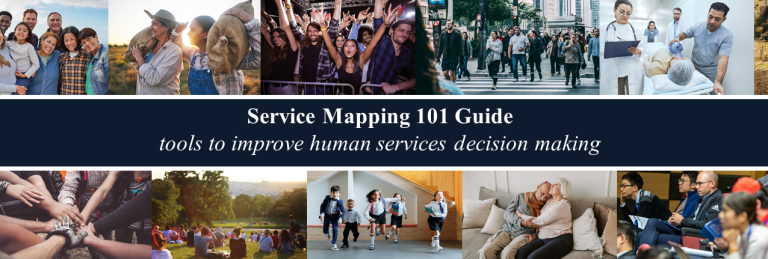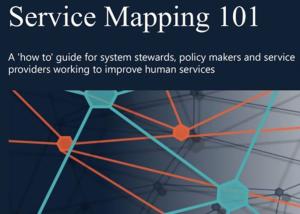By the Policy Projects and Taskforce Office, Department of the Prime Minister and Cabinet

Every Australian citizen will access human services in their lifetime. The human services sector is increasingly facing complex, cross cutting challenges that will continue to change and evolve. Governments are seeking to make connected and coherent decisions for the human services system as a whole and are asking the APS to deliver the information needed to do this.
High quality service maps have the potential to drive efficiency, productivity and outcomes in human services. The Service Mapping 101 Guide is designed for you - APS staff working to improve human services. It provides a toolkit of current approaches, methods and resources to commission, produce and understand service maps - using them as a tool for better decision-making.
What is service mapping?
Service mapping is an umbrella term used to describe a bundle of related methods. This approach produces a locational view of the characteristics of services across different and complex service systems.
Service maps serve two key functions:
- To inform system stewards about service needs, availability and effectiveness to support policy and service design, planning and investment; and
- To support consumers, carers and professionals in navigating services.
High quality service mapping is:
- Replicable – real time insights that can be updated efficiently without going ‘back to the drawing board’
- Scalable – deliver insights at community, regional and national level
- Usable – designed for the needs of the user
- Actionable – provide information for decision making
- Measurable – effectiveness of the service in the short term and the outcomes for the user in the long term
Why is service mapping important?
If you think service mapping is too costly and time consuming to be worth it, you need the Guide!
A range of systemic factors will continue to increase human services demand – an ageing population, increasingly frequent and extreme weather events, cost of living and housing increases. Investing in better service mapping capabilities now will enable government to strategically invest in human services, to maximise the benefits to Australians and use finite resources to best effect.
Community demand for service maps is strongest where services are persistently failing to deliver equitable outcomes, such as in First Nations communities. Demand will also continue to grow with the expansion of place-based initiatives and approaches.
Service maps can:
- Answer key questions about service needs, availability, accessibility, usage, and outcomes;
- Surface community concerns about existing services such as access, inclusivity or capacity issues;
- Enable you and your agency to make informed decisions about where finite funding would have the greatest impact.
How can you incorporate service mapping in your work?
Regardless of your role or experience you can use the Guide to acquire the skills and knowledge to commission, create and interpret service maps.
You have the opportunity to contribute to driving better outcomes for communities and individuals in Australia. Start your service mapping journey today!
More information
The Guide was designed by the Policy Projects and Taskforce Office in the Department of Prime Minister and Cabinet and Shaping Futures in The Cabinet Office, NSW through consultation with human services policy and delivery agencies. Contact the team for further information.




